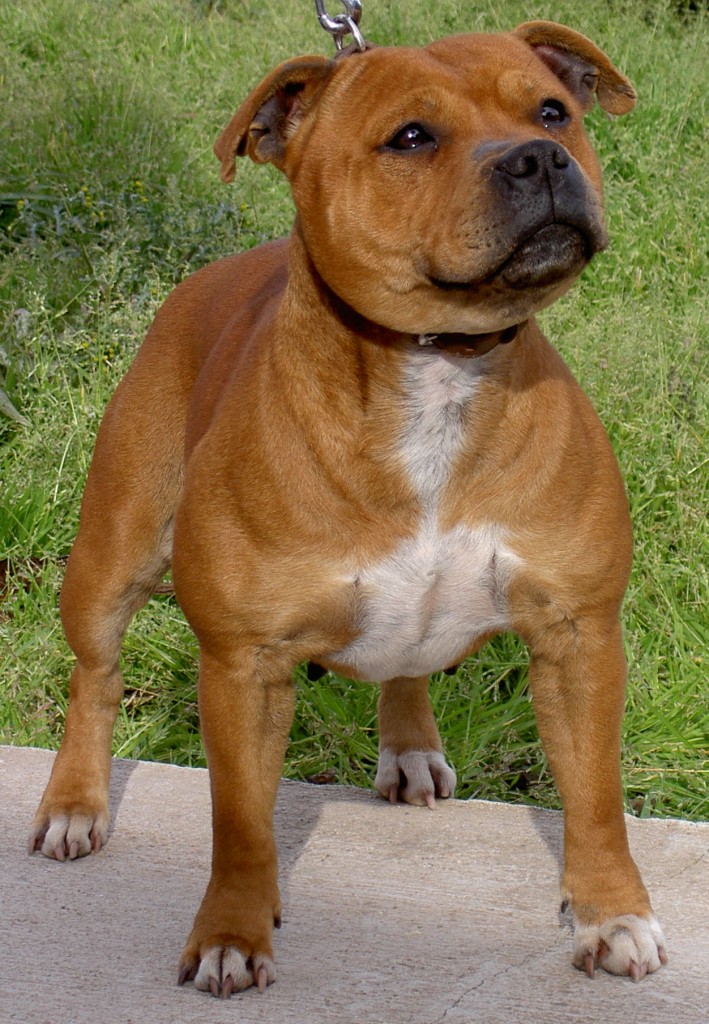Staffordshire Bull Terriers were bred in the early 19th Century in the UK. Originally, these dogs were bred for betting on. Once baiting and dog fighting were made illegal in the 1830s, Staffies were taken in by miners and steelworkers, who applauded their intelligence and loyalty. They were bred with smaller terriers and were commonplace among Staffordshire’s large family homes. Their loyalty and affection towards children has earned Staffies the nickname, Nanny Dogs.

The staffy is a gentle, fun-loving, family dog and great with kids.
Staffies are solid, heavyset dogs. They have huge muscles, particularly around the chest, and strong jaws. Slightly longer than they are tall, they have a low centre of gravity. They have a medium tail, kept close to the ground. Staffies have short, low-maintenance coats that can be pure white, black, brindle, red, fawn, or blue, or mixed with white.
Staffies are a loyal, loving breed. They like spending time with their families, and are often looking to play. They require daily exercise, and particularly enjoy digging or playing games. People-friendly, these dogs love kids, but can be wary towards other dogs. Socialisation from an early age is important, as is positive, play-based training.
Predominantly a healthy breed, staffies are energetic and enjoying running around. As they age, staffies are susceptible to leg trouble, such as hip and elbow dysplasia, and patella luxation (kneecap dislocation).
Allergies can cause them to itch and may lead to secondary infections. Some staffies also suffer from cataracts.
Like all dogs, it’s important to get your staffy microchipped and vaccinated. If you are not thinking about breeding your Staffy, we also recommend desexing for its behavioural and medical benefits.
Staffies are a human-loving breed. They need connection with their owners. Do not leave them alone for long periods or keep them as a “backyard dog”. Close human contact, a decent amount of exercise, and lots of socialisation, training and play will make your staffy a healthy, happy dog.
Training and socialisation early on are imperative to make sure your staffy gets along with other dogs. Boisterous and sometimes stubborn, the staffy benefits from patient, positive training.
Clever and energetic, staffies excel at obedience and agility training. Obstacle courses and puzzles are a great way to exercise your staffy mentally and physically after they have finished puppy school.
| Size | 33-38 cm (F); 36- 41 cm (M) |
| Weight | 11-15 kg (F); 13-17 kg (M) |
| Coat | Short, with moderate shedding |
| Colour | Black, white, brindle, fawn, blue, either full or mixed with white |
| Lifespan | 12-14 years |
| Temperament | Intelligent, persistent and playful |
Want to find other staffy-lovers? Why not join the Staffordshire Bull Terrier Club of Victoria? And if you are thinking about adopting a Staffy, check out Stafford Rescue Victoria.